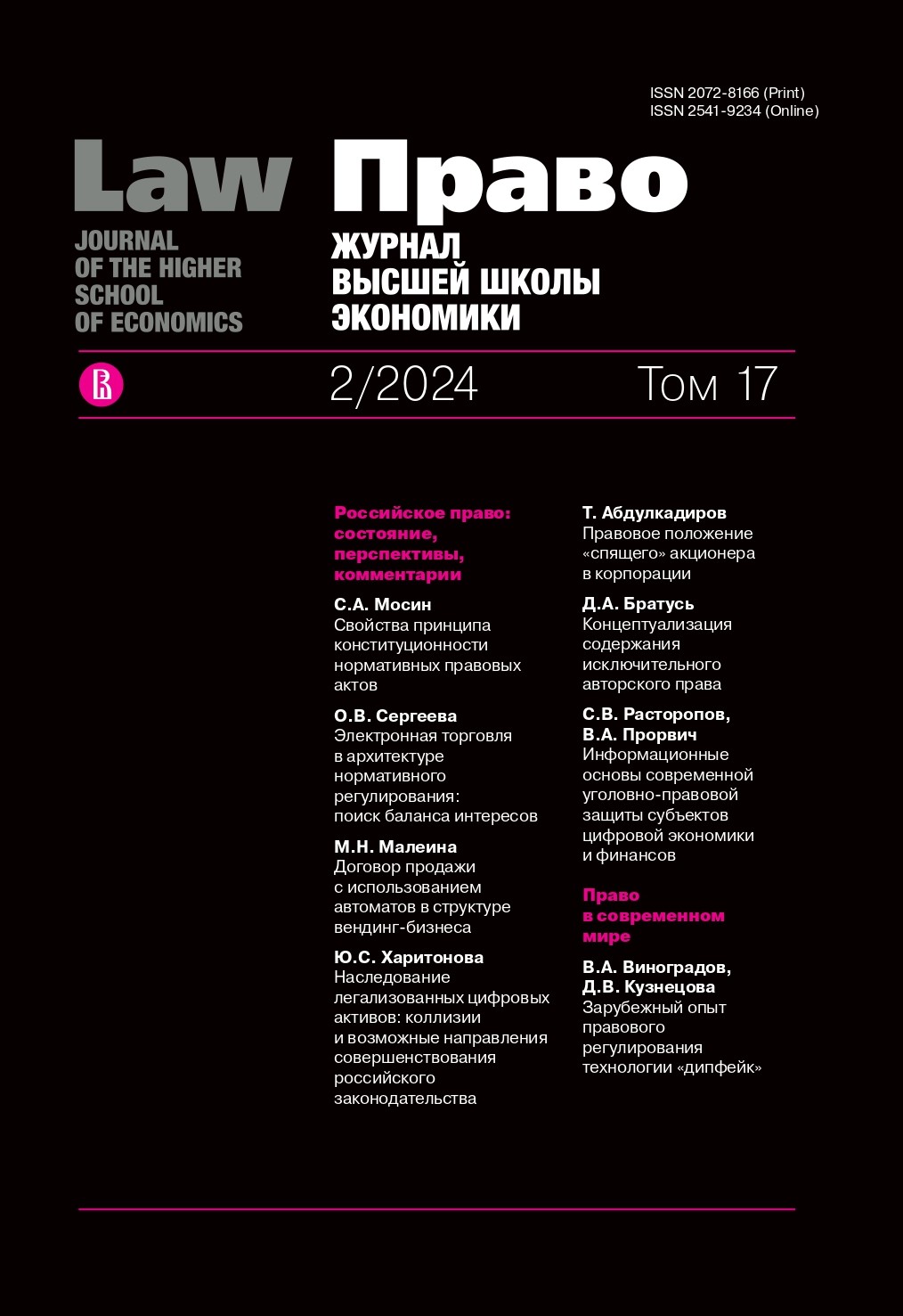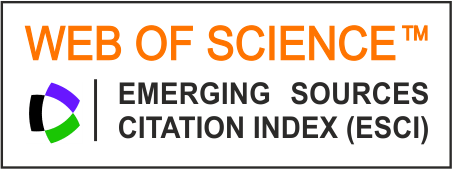Информационные основы современной уголовно-правовой защиты субъектов цифровой экономики и финансов
Аннотация
Эффективность уголовно-правовой защиты субъектов цифровой экономики и финансов в значительной степени зависит от интегрированного применения инструментария, созданного в рамках наук уголовно-правового и информационного блоков. Важную роль в криминализации общественных отношений в сфере цифровых прав, которые активно используются киберпреступностью, играет компьютерное моделирование. Основные источники юридических ошибок при организации уголовно-правовой защиты субъектов цифровых прав возникают из-за попыток механического перенесения некоторых понятий из арифметики, физики, микроэлектроники и других естественных наук в сферу уголовного права. Законодатель связал понятия «цифровых прав» с новым правовым понятием «правил информационной системы». Такие правила создают обладатели информационных систем, а соответствующие правовые предписания на уровне федеральных законов отсутствуют. Вместе с тем взаимосвязанные информационные системы давно применяются при совершении биржевых транзакций с эмиссионными ценными бумагами, а нестыковки правил этих систем нередко приводят к юридическим ошибкам при выявлении криминальных событий. Для их профилактики предлагаются новые способы имплементации инструментария наук информационного блока в сферу уголовно-правовых наук. Одним из наиболее действенных является выделение из определенных совокупностей уголовно-правовых и гражданско-правовых норм юридических алгоритмов, позволяющих сформировать развернутую уголовно-правовую характеристику конкретного киберпреступления и идентифицировать признаки его состава для надлежащей квалификации. Другие виды юридических алгоритмов позволяют идентифицировать особенности предмета и пределов доказывания по уголовному делу о киберпреступлениях рассматриваемого вида. Третьи — организовать применение методики расследования таких киберпреступлений в циклическом режиме с обратными связями для выявления каждого из преступлений и дифференциации их составов. Формирование иерархических систем юридических алгоритмов различного вида и назначения позволяет создать на их основе ряд проблемно-ориентированных компьютерных программ, обеспечивающих правоприменение интерактивных информационных систем для обработки электронных документов и иной информации при выявлении и раскрытии преступлений в сфере цифровой экономики и финансов.
Литература
Abdulvaliev A.F. et al. (2021) Crimes using information technology: qualification and features of investigation. Tyumen: University Press, 376 p. (in Russ.)
Bychkov V.V. (2022) Conceptual, strategic and doctrinal basis of legislative counteraction in Russia to extremist criminals using information and telecommunication networks. Zhurnal chastnogo i publichnogo prava=Ius Publicum et Privatum, no. 1, pp. 166-173 (in Russ.) DOI: https://doi.org/10.46741/2713-2811.2022.16.1.017
Efimova L.G. (2020) Sources of legal regulation of public relations in cyberspace. LexRussica, no. 3, pp. 114-120 (in Russ.) DOI: https://doi.org/10.17803/1729-5920.2020.160.3.114-120
Gaukhman L.D. (2013) Qualification of crimes: law, theory, practice. Moscow: Yurinfor, 543 p. (in Russ.)
Golovko L.V. et al. (2016) The course of criminal procedure. Moscow: Statut, 657 p. (in Russ.)
Lapin V.O. (2022) Theoretical basics of investigation in the field of entrepreneurial activity. Moscow: Yurlitinform, 360 p. (in Russ.)
Luzgin I.M. (1981) Modeling investigation of crimes. Moscow: Juridicheskaya literatura, 152 p. (in Russ.)
Maksimov S.V. et al. (2018) Digital criminology as a tool for combating organized crime. Rossiyskiy kriminologicheskiy zhurnal=Russian Journal of Criminology, no. 4, pp. 476-483 (in Russ.) DOI: https://doi.org/10.17150/2500-4255.2018.12(4).476-484
Opalsky A.P. et al. (2022) Lessons from the combating market manipulation: a manual. Moscow: Alpen-Print, 100 p. (in Russ.)
Romanovsky M.Yu., Romanovsky Yu.M. (2020) Mathematical principles of economophysics: a manual. Moscow: Institute of Computer Research, 360 p. (in Russ.)
Savenko N.E. (2023) Legaltech in the digital economy and legal regulation of economic activity of citizens. Pravo. Zhurnal Vysshey shkoly ekonomiki=Law. Journal of the Higher School of Economics, vol. 16, no. 1, pp. 145-171 (in Russ.) DOI: https://doi.org/10.17323/2072-8166.2023.1.145.171
Shmonin A.V. (2017) Trends in forensic decision-making algorithms in criminal proceedings.Trudy akademii upravlenia MVD=Works of the Academy of Management of Internal Ministry, no. 4, pp. 73-77 (in Russ.)
Talalina E.V. (2022) Data processing using artificial intelligence and the risks of discrimination. Pravo. Zhurnal Vysshey shkoly ekonomiki=Law. Journal of the Higher School of Economics, vol. 15, no. 1, pp. 4-27 (in Russ.)
Timoshenko A.A., Feyzov V.R., Chernov I.V. (2023) Scenario approach to the study of regulation in the field of cryptocurrencies in Russia. Rossiyskiy zhurnal pravovykh issledovaniy=Russian Journal of Legal Studies, no. 2, pp. 21-30 (in Russ.)
Yankovsky R.M. (2020) Cryptocurrencies in Russian Law: Surrogates, “other property” and digital money. Pravo. Journal Vysshey shkoly ekonomiki=Law. Journal of the Higher School of Economics, vol. 14, no. 4, pp. 43-77 (in Russ.) DOI: https://doi.org/10.17323/2072-8166.2020.4.43.77
Zhdanov Yu.N., Ovchinsky V.S. (2020) Cyberpolice of the 21th century: international experience. Moscow: Mezhdunarodnye otnoshenia, 288 p. (in Russ.)


















